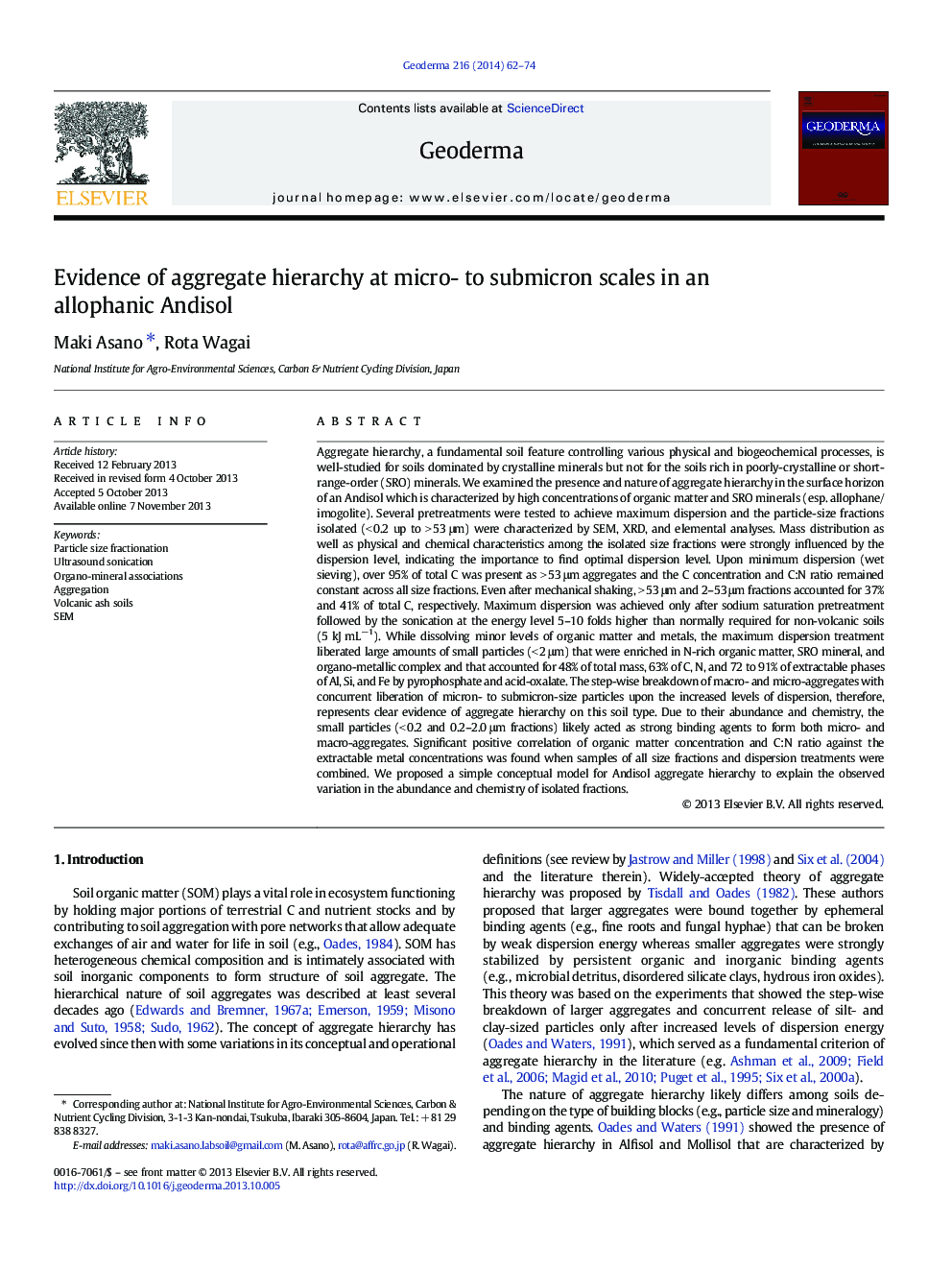| کد مقاله | کد نشریه | سال انتشار | مقاله انگلیسی | نسخه تمام متن |
|---|---|---|---|---|
| 4573439 | 1629477 | 2014 | 13 صفحه PDF | دانلود رایگان |

• Strong evidence of aggregate hierarchy in Andisol was shown for the first time.
• Clay-sized particles accounted for roughly half of total C and soil solid volume.
• Amorphous clay, N-rich OM and organo-metal complex were enriched in these particles.
• These organo-mineral particles contributed to both micro- and macro-aggregation.
• A conceptual model of aggregate hierarchy for Andisol was proposed.
Aggregate hierarchy, a fundamental soil feature controlling various physical and biogeochemical processes, is well-studied for soils dominated by crystalline minerals but not for the soils rich in poorly-crystalline or short-range-order (SRO) minerals. We examined the presence and nature of aggregate hierarchy in the surface horizon of an Andisol which is characterized by high concentrations of organic matter and SRO minerals (esp. allophane/imogolite). Several pretreatments were tested to achieve maximum dispersion and the particle-size fractions isolated (< 0.2 up to > 53 μm) were characterized by SEM, XRD, and elemental analyses. Mass distribution as well as physical and chemical characteristics among the isolated size fractions were strongly influenced by the dispersion level, indicating the importance to find optimal dispersion level. Upon minimum dispersion (wet sieving), over 95% of total C was present as > 53 μm aggregates and the C concentration and C:N ratio remained constant across all size fractions. Even after mechanical shaking, > 53 μm and 2–53 μm fractions accounted for 37% and 41% of total C, respectively. Maximum dispersion was achieved only after sodium saturation pretreatment followed by the sonication at the energy level 5–10 folds higher than normally required for non-volcanic soils (5 kJ mL− 1). While dissolving minor levels of organic matter and metals, the maximum dispersion treatment liberated large amounts of small particles (< 2 μm) that were enriched in N-rich organic matter, SRO mineral, and organo-metallic complex and that accounted for 48% of total mass, 63% of C, N, and 72 to 91% of extractable phases of Al, Si, and Fe by pyrophosphate and acid-oxalate. The step-wise breakdown of macro- and micro-aggregates with concurrent liberation of micron- to submicron-size particles upon the increased levels of dispersion, therefore, represents clear evidence of aggregate hierarchy on this soil type. Due to their abundance and chemistry, the small particles (< 0.2 and 0.2–2.0 μm fractions) likely acted as strong binding agents to form both micro- and macro-aggregates. Significant positive correlation of organic matter concentration and C:N ratio against the extractable metal concentrations was found when samples of all size fractions and dispersion treatments were combined. We proposed a simple conceptual model for Andisol aggregate hierarchy to explain the observed variation in the abundance and chemistry of isolated fractions.
Journal: Geoderma - Volume 216, March 2014, Pages 62–74